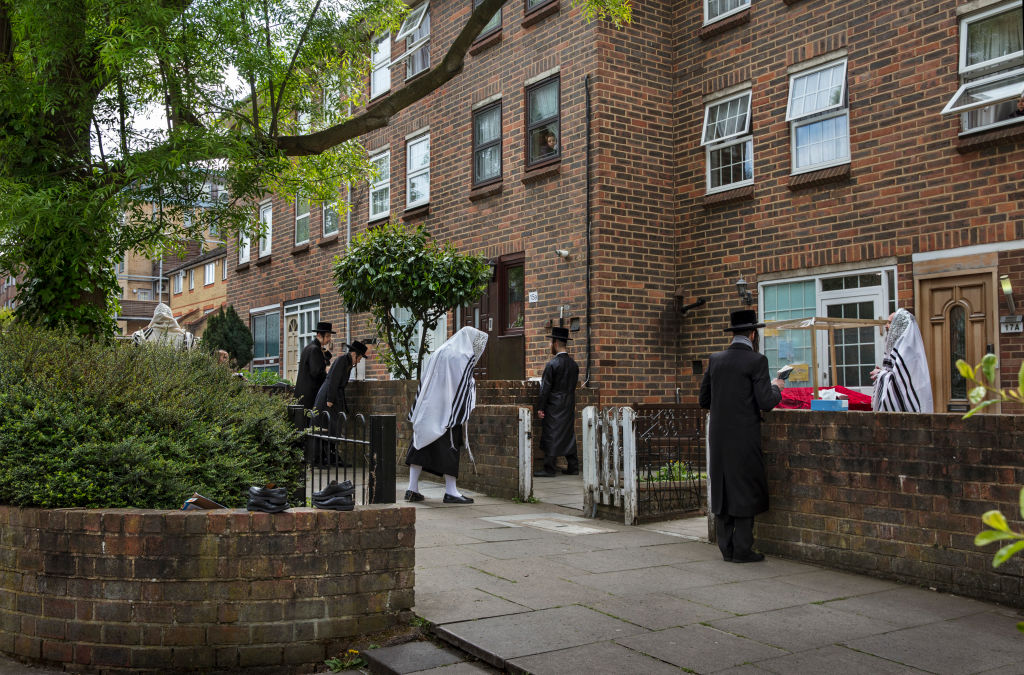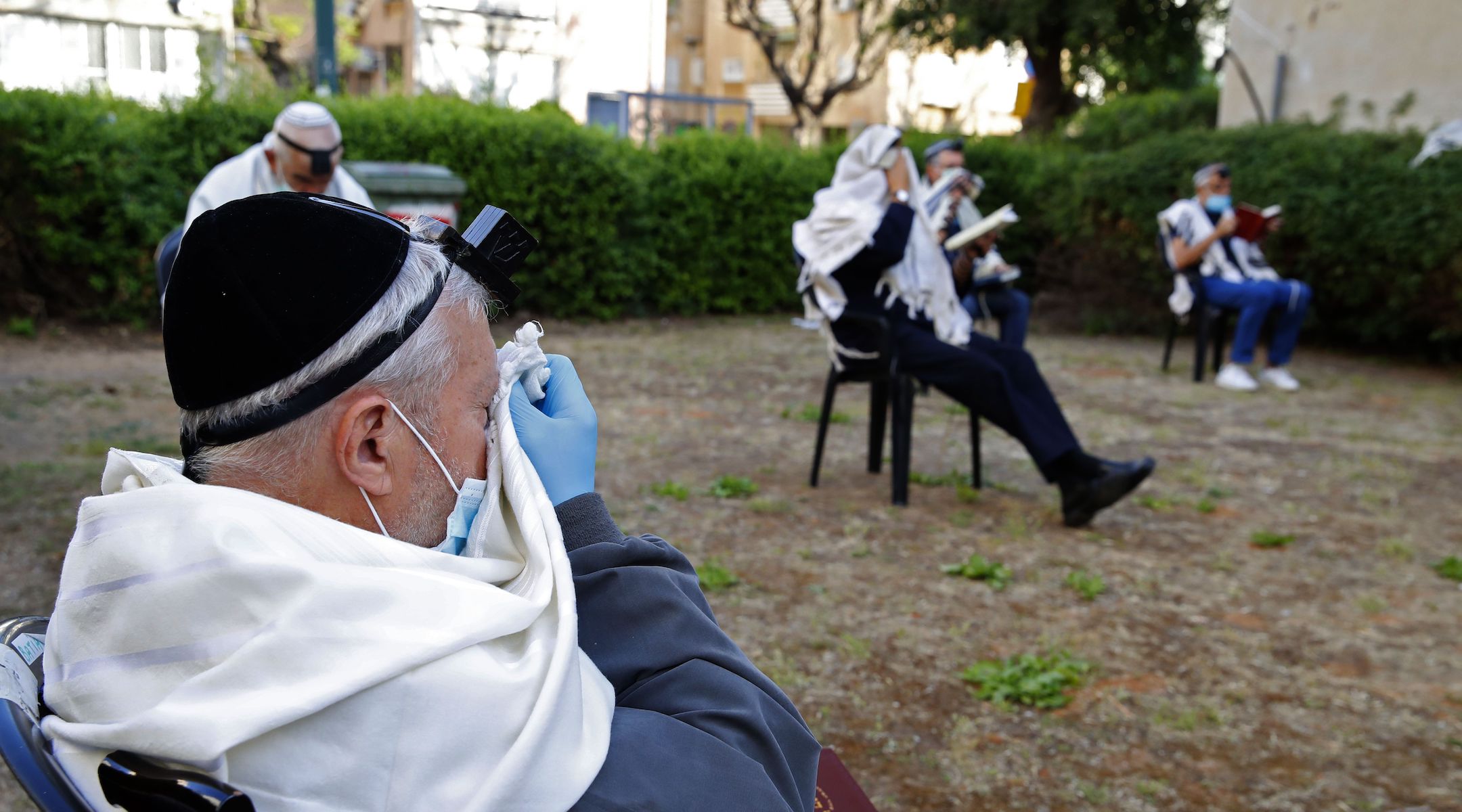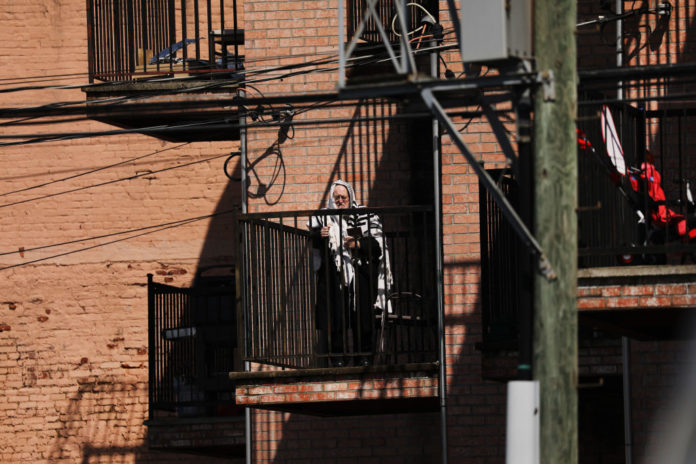NEW YORK (JTA) – When the coronavirus pandemic first descended on the United States in March, the Orthodox rabbis of Dallas shuttered their synagogues together in a remarkable show of unity.
Join our WhatsApp groupSubscribe to our Daily Roundup Email
In April, as the governor of Texas began reopening the state, the rabbis banded together again, telling their congregants that they all would keep their synagogues closed.
But now, as the nation’s lockdown enters its third month, their compact has frayed. This week, the rabbis announced that going forward, each synagogue would decide on its own when to resume in-person services.
“The Orthodox Rabbinate of Dallas have collectively decided that each shul will open at a time and in a way that is best suited for its physical plant and congregation,” the rabbis wrote in a statement published Thursday. “Please note that whenever your shul opens and in which form, one thing will be common to all shuls — the reopening will be gradual, methodical and, in the initial stages it will, sadly, need to be quite different from when we all prayed together.”
The letter offered the latest evidence for an emerging reality: Two months after abruptly ceasing all communal prayer, Orthodox communities across the United States are increasingly divided over when and how to resume this centerpiece of Jewish life.
In Dallas, community leaders are essentially agreeing to disagree about whether it is safe to come back to synagogue. But in other places — including New York’s suburban Long Island, Florida and Ohio — rabbis are openly sparring over whether to permit outdoor minyans, or small-scale prayer services held on porches and lawns.
That Orthodox communities are eager to get back to prayer services is not surprising. Non-Orthodox synagogues have added online Shabbat services and begun allowing prayer quorums to form over Zoom, enabling those who’ve lost a loved one to recite the Mourner’s Kaddish. But Orthodox practice does not allow technology on Shabbat or virtual minyans, precluding observant Jews from fulfilling the religious obligations that form the rhythms of daily Orthodox life.
Rabbis ruled that staying home to prevent the spread of disease was a higher obligation than praying communally during the pandemic’s early days, when it ravaged Orthodox communities in New York and New Jersey. But as time has worn on and other local communities have not experienced the same crisis, rabbis have faced pressure from their constituents to allow minyans to resume with added safeguards.

Last week, major Orthodox groups issued two sets of guidance that urged a slow, careful return to in-person prayer services. One set of guidelines, from the more liberal Orthodox Union, took a firmer stand than the other, from the haredi organization Agudath Israel, against resuming outdoor services immediately. But both groups left final decisions about reopening to local rabbis and health officials.
The result has been tension within Orthodox communities, with advocates of devising a pathway back to communal prayer clashing with those who say it’s too soon, and too risky, to reconvene.
In Cleveland, an Orthodox rabbinical association announced Tuesday that “block captains” could begin organizing outdoor minyans that conformed to distancing guidelines.
It faced swift opposition from other Orthodox rabbis in the area.
“I feel duty-bound to inform people that I am not supportive of the letter,” one of the rabbis wrote, according to the Cleveland Jewish News.
Leaders of a synagogue in Deerfield Beach, Florida, sent a letter to congregants this week sharply criticizing those who gathered for services in what they deemed “rogue minyanim.”
“This level of raw chutzpah and dangerous Sofek Pikuach Nefashos cannot be tolerated,” said the synagogue leaders, using a Hebrew phrase meaning possible danger to human life.
The letter warned that participants in these minyans would be denied honors at the synagogue whenever it reopened.
And the Rabbinical Council of Bergen County, home to a number of large Modern Orthodox communities, released a letter Wednesday saying outdoor minyans “absolutely cannot take place now.” The northern New Jersey group was the first to issue unified rules during the pandemic, shutting down all synagogues under its purview on March 12 as it became clear that an outbreak in the New York City area was spreading within the community.
Perhaps nowhere has the fracture been more pronounced than in areas of Long Island where haredi and Modern Orthodox Jews live side by side on the same tree-lined blocks.
A local synagogue that continued to meet for services stood out so much that a prominent rabbi denounced its leader by name in a fiery lecture on Zoom just before Passover.
Rabbi Hershel Billet of the Young Israel of Woodmere called the rabbi who allowed the prayer service a “danger to the entire community” and promised to personally try to “run this man out of the community.”

Later that month, a group of 57 rabbis from the Five Towns and Far Rockaway signed a letter urging against gathering for outdoor services.
That was three weeks ago. In the past week, several rabbis have begun cautiously approving the practice under narrow circumstances.
The split in this community has fallen along loose ideological lines, with rabbis aligned more closely with the haredi community, often described as ultra-Orthodox, allowing the outdoor minyans while those in the Modern Orthodox camp continue to oppose them.
But there have been some exceptions where the distinctions blur between parts of the Orthodox community.
Rabbis Eytan Feiner and Motti Neuberger of The White Shul, a synagogue in Far Rockaway affiliated with the more modern Orthodox Union, sent a letter to congregants last week allowing outdoor minyans to proceed with restrictions in place.
The letter advised congregants that the minyans could only be held if each family remained on its own property and maintained at least 6 feet of distance from anyone outside his own household.
“Only OUTDOOR Minyanim are permitted,” they wrote.
Rabbi Zalman Wolowik, director of the Chabad of the Five Towns in Cedarhurst, sent a similar letter to his congregation after previously prohibiting outdoor minyans. But Wolowik told the Jewish Telegraphic Agency that he had not participated in such a minyan himself because his house is not situated in a way that would allow it.
“If they can do it right, everybody on their own property … kudos to them if they can do it safely,” said Wolowik, noting that many people are not able to participate in the minyans if they don’t live close to enough people who can participate. “I am their best example – I can’t do it and so I don’t do it.”
But the guidance issued last week by the Orthodox Union and Rabbinical Council of America cautioned that even carefully regulated outdoor services could spin out of control.
“Care must be taken to ensure that this not become a free-for-all,” the guidance said.
One Long Island rabbi who had recently allowed the outdoor minyans wrote to his congregants Thursday warning that his permission would be revoked if the rules for running the minyan were broken.
“I am sad to say that a number of people have called to tell me that the guidelines have already been broken in several ways,” Rabbi Yaakov Feitman of Kehillas Bais Yehudah Tzvi wrote.
It was that possibility that the rules would be broken that led Modern Orthodox rabbis in the community to oppose the practice.
“In theory, one can create a minyan today that doesn’t pose risk,” Rabbi Dr. Aaron Glatt, a rabbi at two synagogues in the area, including Billet’s, and the chief of Infectious Diseases at Mount Sinai South Nassau Hospital, said. “But the question is can that theory be translated into reality.”


Clearly the more leftist OU etc groups will follow Dr Fauxchi and his ideas. The fact that he was on an OU interview the other day and suggested shuls being closed through yomim noraim with maybe only once a week minyan – after all he said, you don’t have to do it more often, without major pushback by the organization, tells you where they stand.
Everyone else who has a brain and sees that beaches are allowed open even with 50% capacity, tells you that there’s no reason a shul can’t do the same thing, especially if they set up in a way that they are outside, perhaps with tents etc. If it has to be like a beach, then put down sand!
It’s clear that there’s excessive government control here in play by certain people, especially those on the left. Unfortunately it has turned political but you see where the left stands on things, it’s called control & fear tactics.
The friction is coming from the left. The right chareidi Rabbis are doing their thing and keeping to themselves and their kehilos.
Rabbi Billet will not stop harassing and threatening the right. It’s his way, or it’s no way at all! He himself writes there is nothing wrong with davening outside, but he wants to make a lo plug gezaira, and anybody who doesn’t follow his psak, is not worthy of being a Rabbi! He has called the police ON YOM TOV to be moser his colleagues. The police came and found no law was being violated.
In Europe they had their own way of dealing with mosrim who hide behind the mask of “Rabbi”.
Is it worth it if one person contracts covid and dies? I think not.
I will continue to daven as the Rashbi did, in a cave and without a minyan. Don’t need the talking, the gawking, the hawking, the schnorrers, the gaivehdik, or any of it. When it comes to kaddish, the Ribono Shel Olam and my parents will forgive me if I miss for this year, at the minimum. As the possuk says, the dead cannot praise you and we should live by them (the entirety of Torah) not the pick and choose.
In Deerfield, a youngster is only 70. only certifiable morons would allow any sort of minyan. the rabbi correctly put them chutz la’machaneh.
there are two types of rabbis. some believe the rules will be treated as halakhot. some know how jews behave. the latter should be followed; the former should find a different profession where their viewpoints are perhaps less harmful.
Sadly, Most of the people wanting to continue minyanim are doing it for social reasons, (or misguided ideological reasons). There are porch/street minyonim with people talking, joking, coming late etc. They have totally missed the point. Many are not adhering to the social distancing guidelines too.
How much kavona can you have when standing outside? (Its difficult enough at the best of times). And even davening outside is a halachic problem to start with, even if in the same space; but on a separate property, different levels, fences etc are all more problematic too.
IY”H we should all be legally back in shul soon, but with renewed understanding and appreciation of davening and a minyan.
The real reason that billit and company don’t want outdoor miyanim is because it makes them irrelvant
The OU issued a set of nebulous guidelines, such as prohibiting severely obese people (it did not define what it meant by that term), as well as people over 65 year of age, even if they were healthy. It prohibited kissing ritual objects, but did not specifically prohibit handshakes or kissing, which it should have. Also, it came out with some guidelines about people not congregating at exits near Shuls. Good luck with that one; has everyone ever noticed how people will deliberately stand in the way by exits when people have to exit a shul?
In theory, one can create a minyan today that doesn’t pose risk,
But the question is can that theory be translated into reality
yes it can. We have been doing this for a month already. yet BH zero new calls in over two weeks. The numbers speak louder. Porch minyan works
You agree its safe and are just worried about relaity? Well reality is the koach of an amen yihah sham raba saves lives. Unless it “poses risks” your fears of reality don’t concern us.
It wont be any safer in a month so unless we are not opening until theres a vaccine (which might not ever come) what are we waiting for?
So far i didnt hear any sound reasons for opening up and risking lives. Just as people cant control themselves from talking in shuls the same way they will break social distance rules. So who wants the guilt of people getting sick on their shoulders? But dont worry at least you will be able to tell the government that they cant control you, ha!
So my neighbor in Flatbush made a minyan in his yard this morning for the first time, 12 people came from different homes, 11/12 were not wearing masks, 2 people were sneezing
Need I say more
What’s more a risk, Getting Covid19 at a minyan ? Or gaining a couple of pounds By indulging in Cake Herring Cholent Kishka and Kugel ?
The author of this article totally misrepresented the Dallas Orthodox rabbinate’s latest letter. They did not agree to disagree. The fact is that the physical plant of each shul varies widely, as well as the populations of each shul. Hence they all agree that the practical implementation of reopening for each shul will look different.
By Rabbi Yechiel Spero
Let me tell you an absolutely beautiful Corona story.
There is a fellow in Toronto who asked Rav Shlomo Miller if he can make a porch minyan, and Rav Shlomo paskened for him that there was no problem with it. And so, he had a minyan every day on his porch and in his neighbor’s porch; together they had a minyan, and that’s what they did every day from Pesach and on.
Well, on Lag Ba’omer at night, at 9:00 at night, they decided they wanted to have a little bit of a kumzits. But before they played music at 9:00 at night, the father decided he wanted to ask two of the elderly women who lived near them, Jewish women, but completely not religious. And he knocked on one’s door and he says to her, “I don’t know if you know who I am…”
She cuts him off and says, “Oh, I know very well who you are! You’re the group that I pray with every morning.”
“Pray with?”
He says, “Yes. Ever since you’ve started praying on your porch, I lay in bed and I pray with you. It’s been decades, but it’s so beautiful. And not only that, but I called up my son and I said to him, ‘You find your tallit and your tefillin and you pray as well. These people are praying, even in the snow (in Toronto it snowed after Pesach) if they can pray, then you need to pray as well.’”
And of course, she was more than happy to allow them to play music and to sing.
We have to remember how important it is for us to be ‘living Kiddush Hashem’, every moment of this difficult and challenging situation. And Im Yirtzeh Hashem, as we continue to be Mekadesh Shem Shomayim, we will inch closer and closer to our return to our Batei Knesios and Batei Midrashos, Bekarov.
Inspiration Daily
High risk were ruled by doctors and Rabbanim not to go to Shul reopenings.
Included in high risks are clinically obese. Clinically obese is defined as more than 20% above ideal weight.
Ideal weight, medically, is 100 lbs. for first 5 feet of height plus 5 lbs. for each additional inch. That would be, for a 6 ft. tall person to be ideally 160 lbs. and that 6-foot tall person over 192 lbs. being clinically obese.
Basically almost all of us men over 40-50 are clinically obese and at ch”v high risk, and should not be allowed at these shul openings.
Maybe Dr. Fauci himself is not clinically obese. He looks kind of thin and presumably eats healthy.